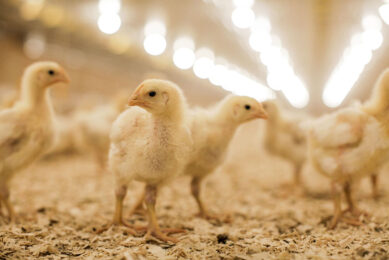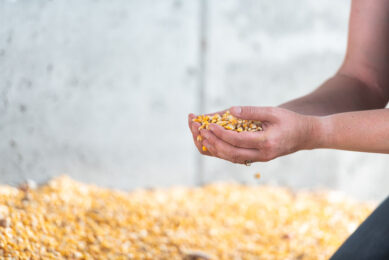Is yield the only way to value crops?

Evolving technology and better insights into best practices have offered an alternative approach to crop production, providing the innovative tools to not only enhance yield, but also to improve nutritional value.
Historically, the commercialisation and intensification of crop production was fuelled by necessary yield improvements to supply a growing population. Current and future focus however, is geared towards delivering additional desirable agronomic traits, incorporating stress resistance, pathogen control and nutritional quality; while still satisfying an evolving consumer demand for more organic and sustainable produce. Advances in technology, particularly in the area of analytics, provide detailed perspectives into plant performance and how specific crop management approaches can influence overall plant value, both in terms of yield and quality.
Plant responses to challenges
Understanding the inner workings of the plant cell is a rapidly evolving research topic, but the ability to demonstrate real-world applications of value-added crops is also constantly developing. A recent 16.5 T/ha record achieved in England for wheat production is reflective of the importance of maximising yield through a stringent crop management programme.
However, is producing more the same as producing better?
While crop yield improvements are primarily driven through varietal breeding, understanding how and why a plant responds to defined challenges, particularly in relation to biotic or abiotic stresses, is an area gaining particular attention in plant research. Nutrigenomics is used to study gene expression responses to feed ingredients in animal and human diets, the ability to understand how specific genes in the plant may be regulated by nutrients, applied either to the plant or the soil, offers a level of feedback to crop management programmes that was previously unimaginable. Similarly, new analytical insights into the synthesis and function of proteins and phytochemicals compliments genomic based research, demonstrating that plant responses are dynamic and immediate, constantly changing to meet the functional demands of the plant. Again, the continuous development of analytical technologies, in both chromatographic and spectroscopic fields, has facilitated the multi-component analysis of cellular status. Emergence of the ‘omic’ and ‘infomatic’ technologies has offered a more detailed and better understanding of how plants respond to their environment, soil quality and nutritional supplements.
The study of cellular pathways
Improvements in crop quality have traditionally been limited by a fundamental lack of understanding of plant metabolism and the numerous interactive pathways involved in cellular function. The emergence of plant cell culture as a lab-based approach for studying such cellular interactions has gone someway to addressing this problem, facilitating the rapid analysis of crop response to a variety of potentially beneficial compounds (workflow of a plant cell culture model illustrated in Figure 1). While the typical use of plant cell culture has been for the commercial synthesis of valuable secondary metabolites, this in vitro platform has more recently been used in the study of cellular pathways, investigating the ability of active compounds and biostimulants to increase the health and performance of certain crops.
Working at a cellular level has opened the door to the large-scale screening of biostimulants, in a continuing effort to improve both crop productivity and nutritional value. With more and more plant species housed in dedicated culture banks, researchers have been able to identify a range of natural compounds capable of stimulating the production of beneficial plant phytochemicals. Positive findings from the lab, such as the use of microbial-derived fermentation extracts to improve plant antioxidant capacity, can then be transferred to the field and assessed in a ‘real-world’ setting.
Nutritional value of the plant
While yield will always be an important metric when evaluating the efficiency of a crop management system, nutritional value is an agronomic trait that has a profound influence on general health and well-being. When looking at nutritional value, we predominantly focus on macro- and micro- nutrients; however more recently, phytochemicals, antioxidant and phenolic status have become important considerations. This aspect of crop quality has not always received the distinction that it deserves. The reduction of selenium-rich Canadian wheat imports into the UK in the 70s is a good example of this. Its replacement with selenium-poor European wheat over a 30 year period resulted in a concomitant reduction in the selenium status of the British population.
From a consumer perspective, the idea of nutritionally enhanced functional foods is becoming more and more desirable. The perception of certain foodstuffs having a functional quality, above being simply nutritious, has elevated the status of certain ‘super-foods’. Identified as those imparting noticeable health benefits and being associated with the alleviation of nutrient-related diseases, the popularity and demand for ‘super-foods’ has made targeted production practices even more relevant. While the relationship between such ‘super-foods’ and improved health is still debated, it has long been established that the nutritional quality of our food has a direct effect on our health and well-being.
From a scientific perspective, nutrient composition can be quantified through chromatographic means, continuing the use of advanced hyphenated mass spectrometric techniques for agronomic purposes. Phytochemical, antioxidant and macro- and micro- nutrient contents are directly reflected in crop growing conditions and can be analysed in the laboratory to ensure that the nutritional value of the crop is not sacrificed by efforts to improve yield. Addressing the ‘dilution effect’ present in modern agriculture, whereby an inverse relationship exists between crop yield and nutrient value, should be one of the biggest concerns facing crop producers today. Certain mineral and vitamin levels for a range of cereals, fruit and vegetables have declined approximately 20-40% over the last half century, aptly illustrated by the need for eight oranges grown today to fulfil the same amount of vitamin A as one orange from 50 years ago.

Biostimulant programme in practice
As a progressive measure, such analytical information can then be used to design a management programme whereby both crop yield and value are improved. Research being carried out at Alltech’s European Bioscience Centre in Ireland is currently focused on just that. In a recent field trial on powdery mildew challenged spring oats and in the absence of conventional pesticide treatments, an Alltech Crop Science (ACS) biostimulant programme, incorporating microbial fermentation extracts, demonstrated an improved yield of 8.5% (equating to an increase of 0.6 T/ha), with biochemical analysis indicating a 14.7% increase in phenolic content (Figure 2).
While global grain outputs and prices have remained inconsistent over the last number of years, the challenges faced by producers are ever increasing. Climate, access to arable land, soil quality, population growth, meat consumption demand and supplying the food, feed and fuel sectors are all testament to this. Inconsistencies in crop production have been traditionally mediated by a greater reliance on pesticides, irrigation and synthetic fertilisers. However, stricter regulations, less efficient soils and a greater market demand for more sustainably grown produce will invariably change the modern agricultural landscape moving forward. It is estimated that a 2.4% annual increase in crop yield will be required to sustain 2050s projected population of 9.3 billion, equating to a relative doubling of current production efforts. Sustainably meeting this target will be a challenge; however, given the developing technologies in the agronomic sector, focus on improving the nutritional quality and value of crops may be an alternative approach to offset the societal demand for yield – producing not just more, but better.
Join 26,000+ subscribers
Subscribe to our newsletter to stay updated about all the need-to-know content in the feed sector, three times a week. Beheer
Beheer











 WP Admin
WP Admin  Bewerk bericht
Bewerk bericht